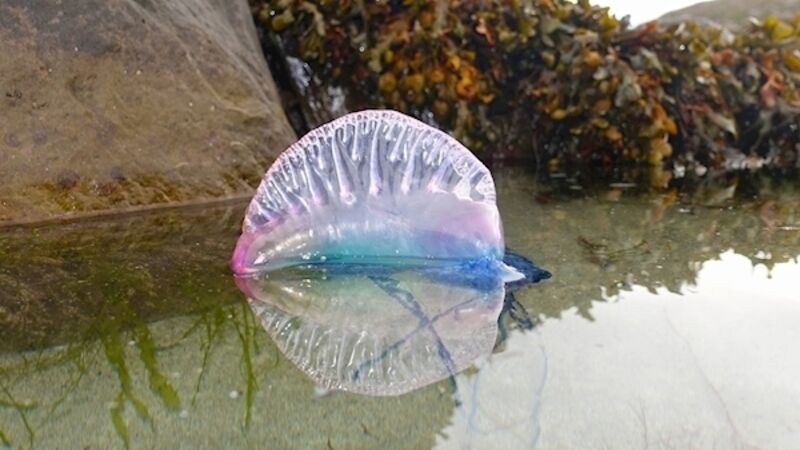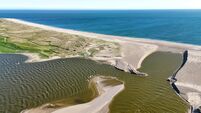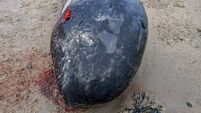Scientists issue jellyfish warning after more than 30 wash up on south-west coast

Scientists have issued a warning after dozens of deadly Portuguese man o'war jellyfish - the most venomous in the North Atlantic - washed up on beaches in Cork and Kerry.
At least 30 of the distinctive jellyfish have washed up on the south-west coast in recent days. Their sting is excruciating and in some cases can be fatal.
Prior to 2016, sightings of the jellyfish in Irish waters were extremely rare but this is the fourth year in a row that significant numbers have washed up on the south-west coast.
Dr Tom Doyle, a lecturer in zoology at the School of Biological, Earth and Environmental Sciences at UCC, said the tens of thousands of stinging capsules on its tentacles can be active for several days after they have been washed ashore, and he advised bathers, open water swimmers and beach walkers to be cautious.
"Prior to 2016 it was extremely rare to see a Portuguese man o‘war jellyfish in Irish waters," he said.
"Occasionally, one or two would be reported in the odd year but we have to go as far back as 1968 before we had anything like the numbers we had in 2016 and 2017.
"It’s difficult to say what is causing these unusual abundances but it may be associated with warming waters and an increase in windiness and frequency of storms."
The first recorded observation this year was from Derrynane Beach in Co Kerry last Friday. Two more were observed in Valentia harbour on the same day.
There were 20 sightings from Cape Clear on Saturday, a handful from Sherkin Island, two from Ballinskelligs, then at least eight on Ballydonegan Beach, near Allihies, on the Beara peninsula over the weekend.
"Many more are likely to wash up in the coming week," Dr Doyle said.
Although technically not a true jellyfish, Portuguese man o'war belong to a group of animals called siphonophores.
Visually very distinctive, each one consists of an above-water purple-blue colour float which is shaped like a Cornish pasty, semicircular with crimped edge, between 7 to 15cm long.
They have various specialised feeding and reproductive structures and long stinging tentacles that hang below.
They are sometimes found in large groups, or ‘armadas’, at sea that can be blown onshore by strong winds.
Dr Doyle asked anyone who sees a Portuguese man o’war jellyfish to photograph it and report its location on the Big Jellyfish Hunt Facebook page.
"This 'citizen science' helps us track these events in greater detail than ever before," he said.













